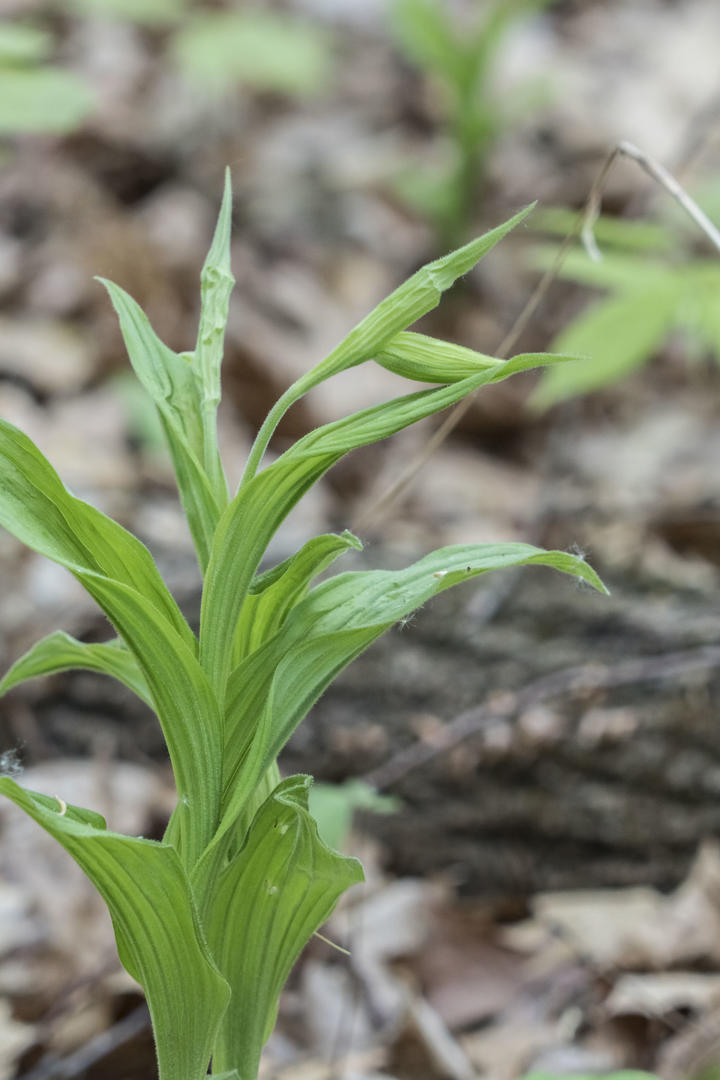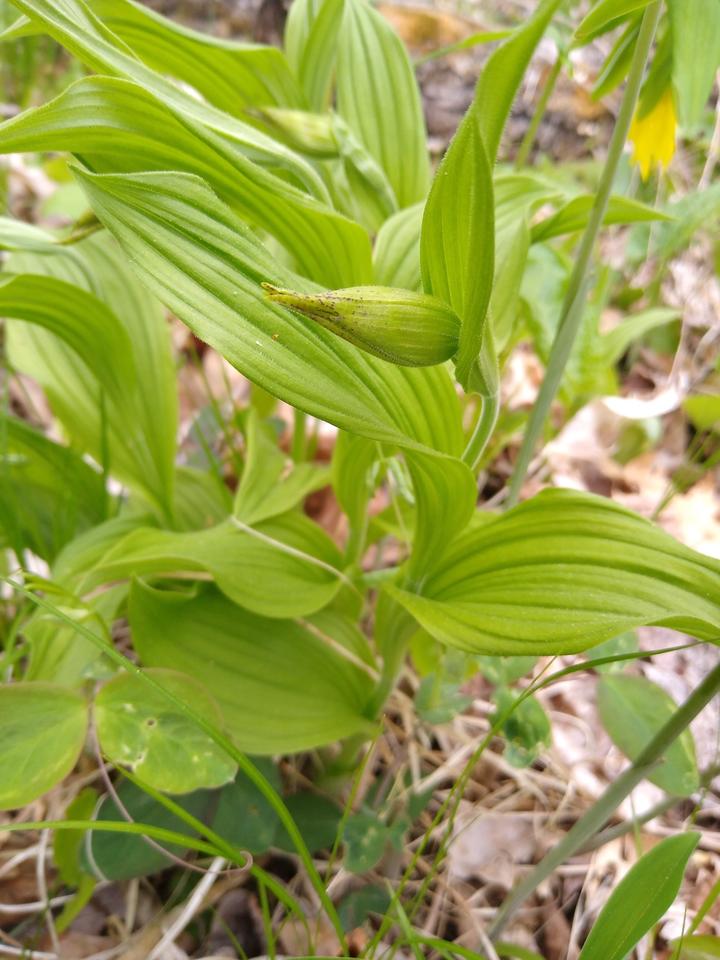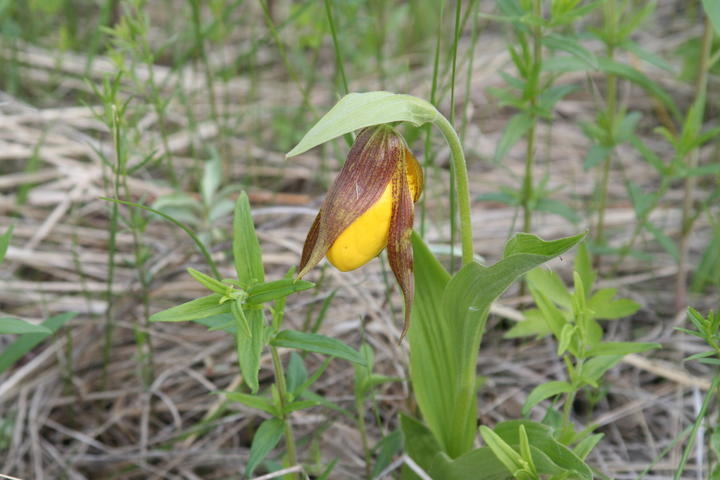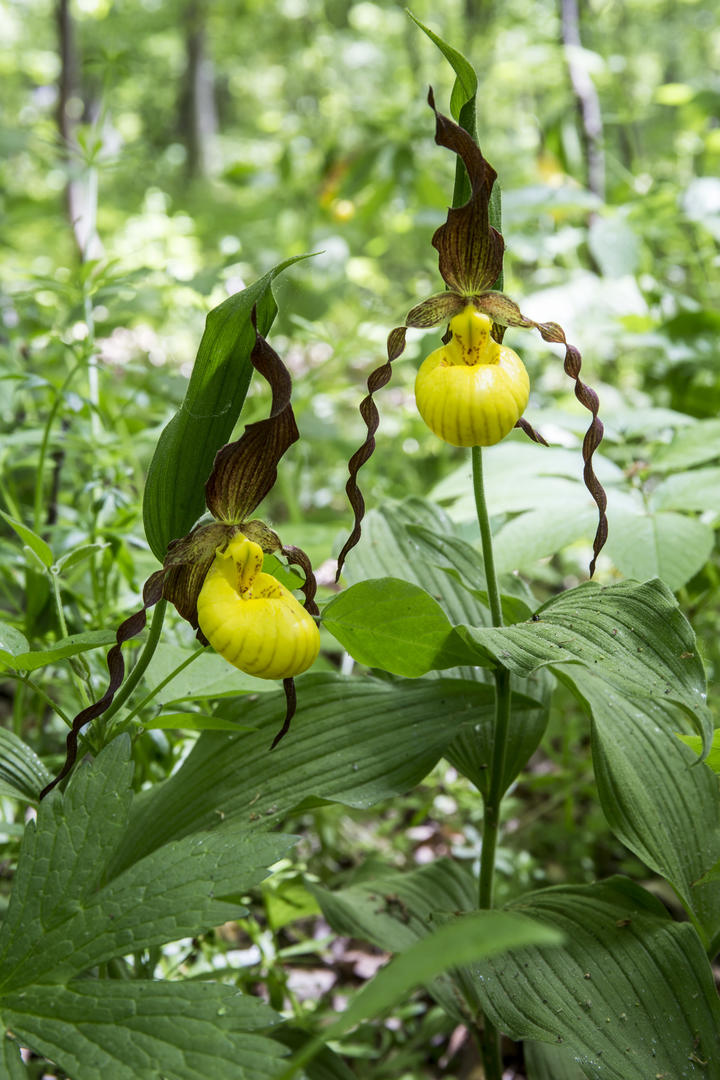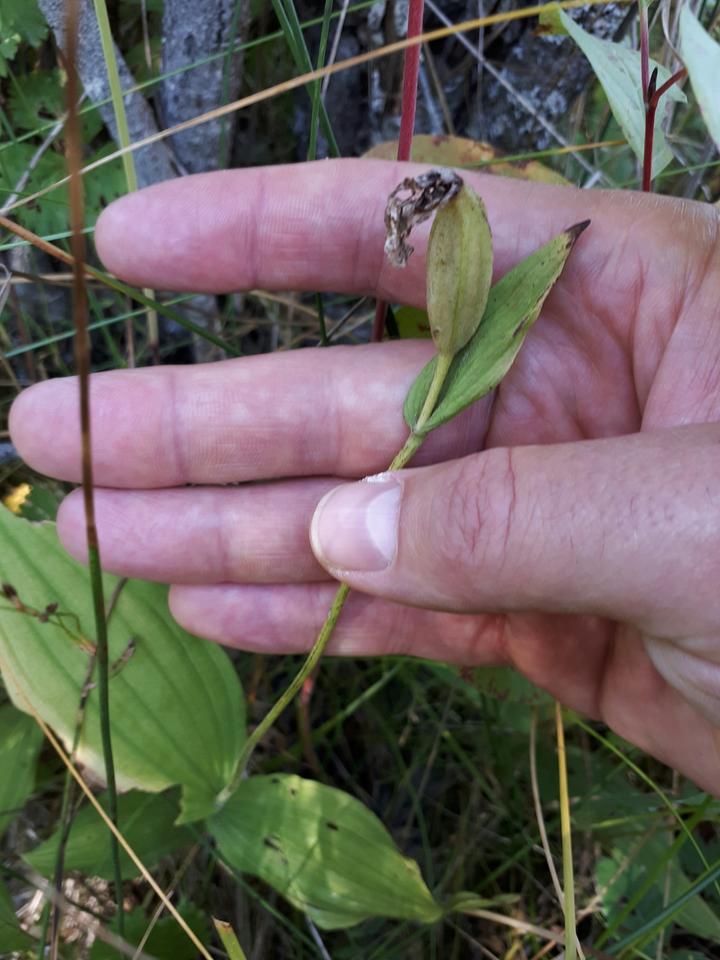More names for this plant
Anishinaabemowin: Makizan
The Dakota and Anishinaabe were among the earliest people to name Minnesota’s plants and animals, as well as to understand them in relation to Minnesota’s climate and seasons. Those original names are still in use, and several are included on the Season Watch website. However, complete translations were not available.
Latin (or scientific name): Cypripedium parviflorum v. pubescens
The scientific community has a convention of assigning agreed-upon Latin names to every kind of organism. Using scientific names helps people communicate confidently about the same organism and organize lifeforms based on how closely related they are.
Page contents
About the greater yellow lady's slipper
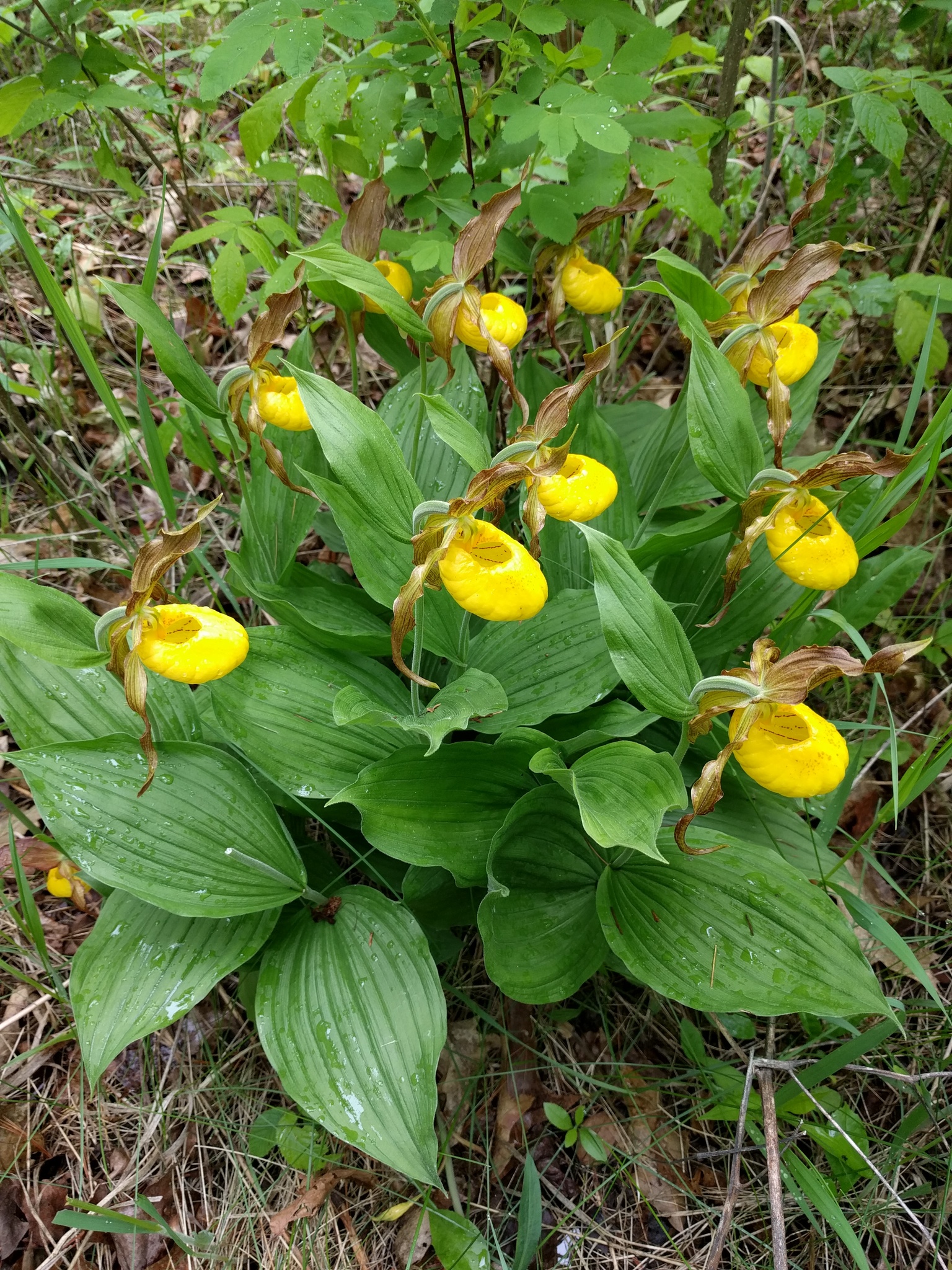
June 2018, Carlton County, Minnesota
Photo © Tony Ernst, some rights reserved (CC-BY-NC-SA)
iNaturalist observation
About the greater yellow lady's slipper
- The greater yellow lady’s slipper is a native, perennial orchid that grows up to thirty inches tall.
- Each plant has three to six alternate leaves that grow up to seven inches long and have parallel veins.
- They produce one to two flowers that consist of a yellow pouch-like structure as well as lateral petals that are yellow with purple stripes.
- These flowers bloom in late spring to early summer and are pollinated by various insects.
- The greater yellow lady’s slipper is found throughout the state of Minnesota, except for the southwest corner.
- Fun fact: These are one of the most common orchids in the United States, and they can live up to one hundred years old.
Visual guide to phenology
Watch for the appearance of leaves, flowers, and fruits. Take notice of when flowers open and fruits ripen.
Note to observers
This page explains general clues to watch for when observing greater yellow lady's slipper phenology. However, this page does not explain how to identify this plant or collect data in a standardized way.
- For help with identification, see Minnesota Wildflowers.
- For guidance on collecting data, see Nature’s Notebook.
Graphs and historical data
Note: The Orientation Center provides a map, as well as information on reading graphs; interpreting summary statistics, who collected the data and how; and how to download datasets for independent exploration.
Flowering
- Earliest: May 1 (occurred in 1977)
- Average: May 17
- Latest: May 27 (occurred in 1961 and 1979)
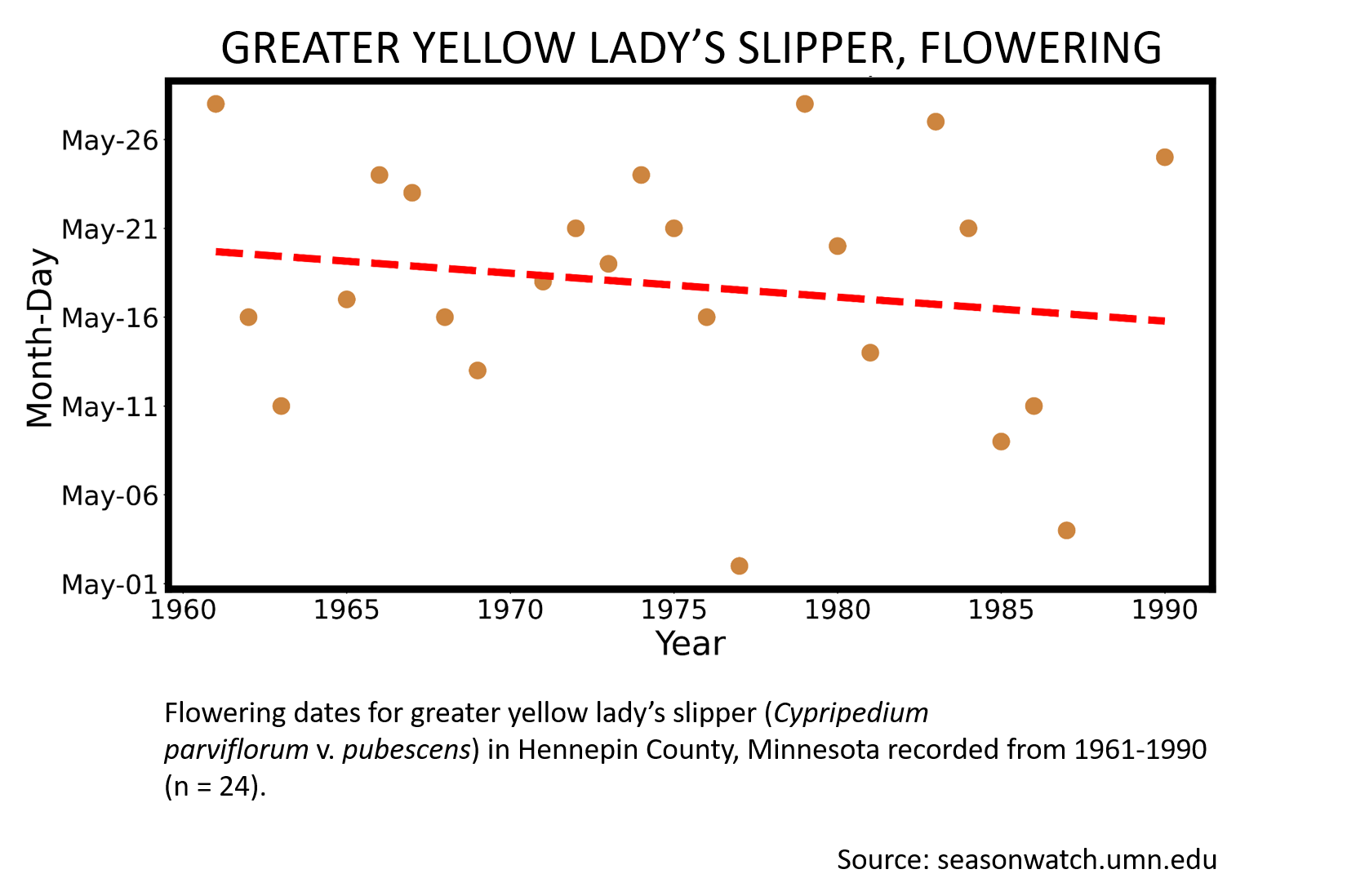
Last flower
- Earliest: May 17 (occurred in 1987)
- Average: June 6
- Latest: June 25 (occurred in 1961)
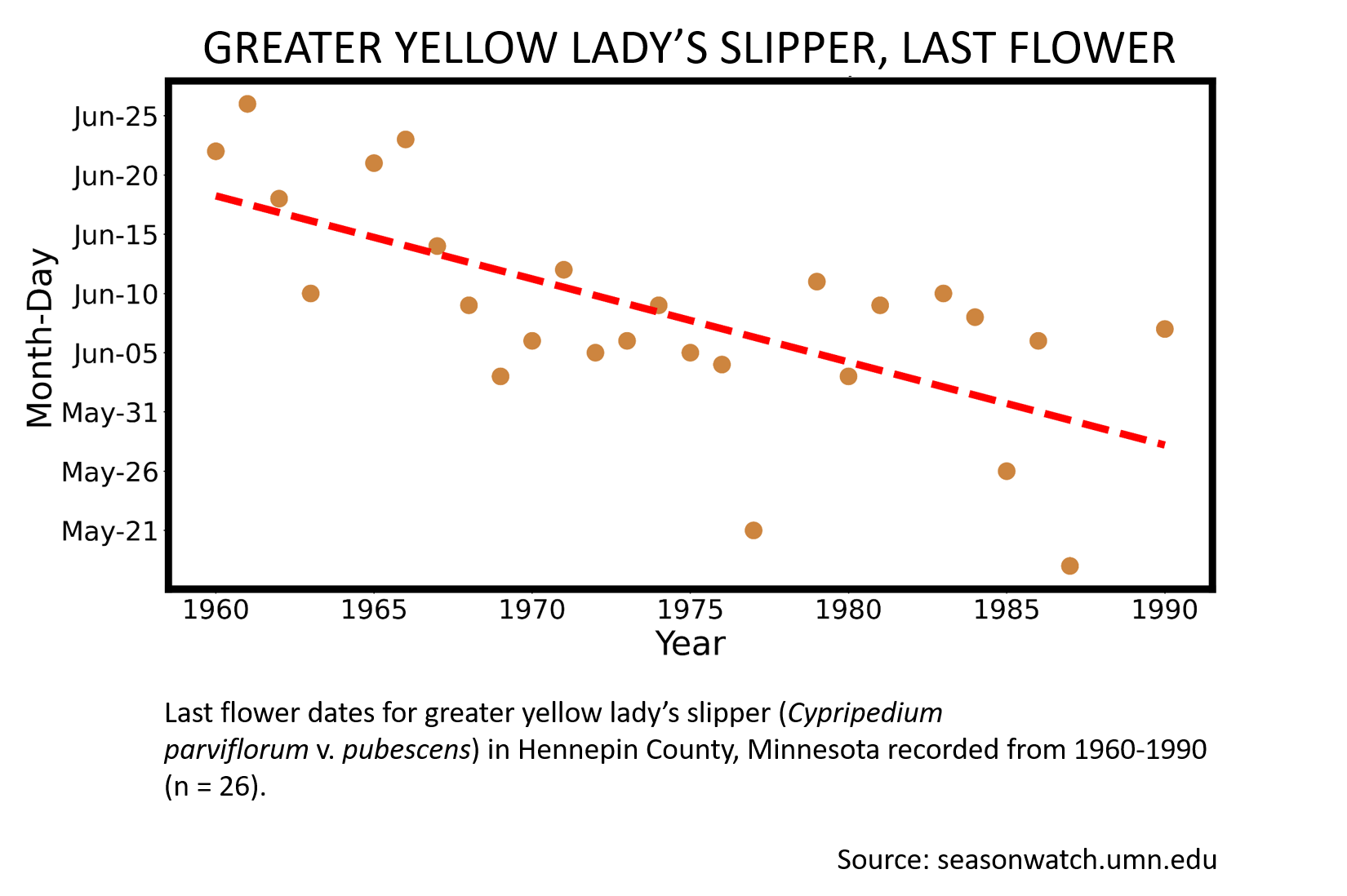
More resources
Keep exploring Season Watch
Keep exploring Season Watch
Co-author: Lynsey Nass, Minnesota Master Naturalist
